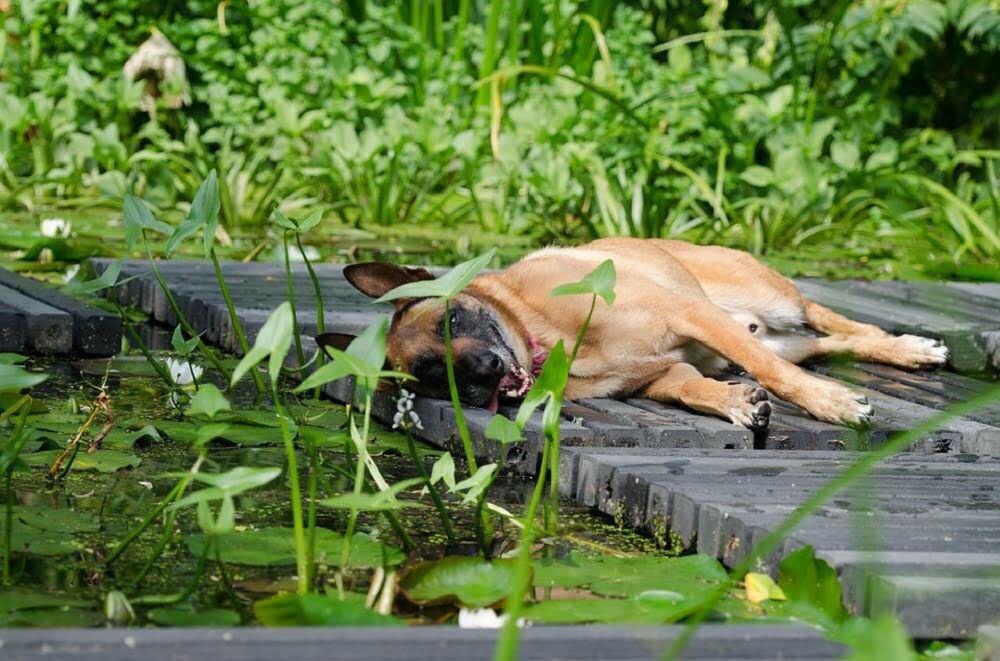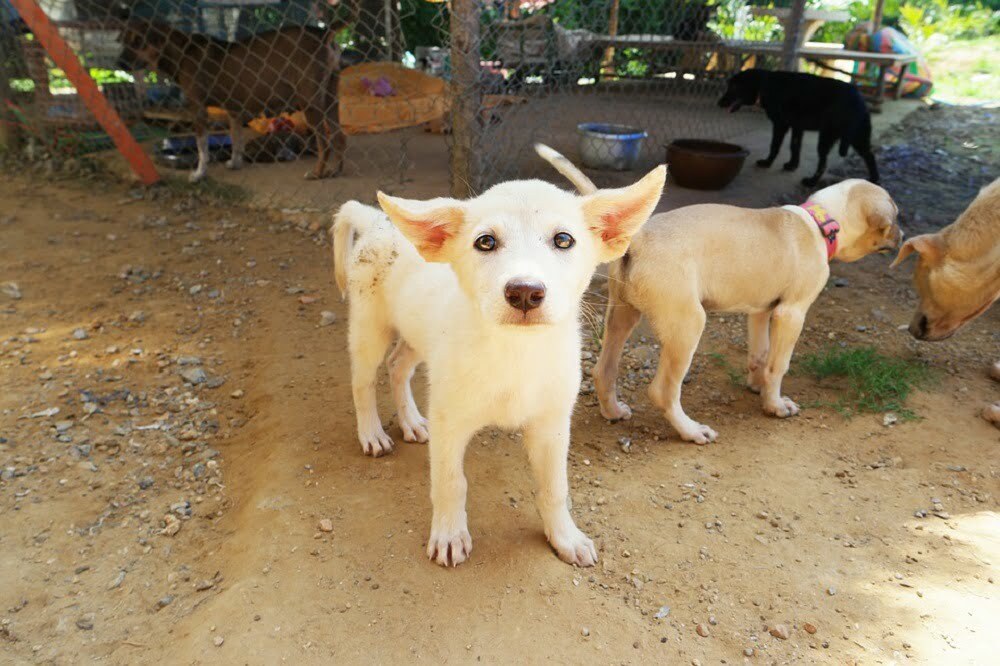Parvo is a disease that is highly contagious and can often be fatal for young dogs, which is why it is really important to do your best to treat any areas that could be infected with parvo. It can survive for a length of time on outdoor surfaces, which means that there is a chance that it can affect other dogs, or on rare occasions, reinfect your dog.
If your dog or any other dog has been in your yard and now has parvo, you are going to need to treat your yard to get rid of it. Otherwise, it will remain in your yard for a long period of time. To make sure it is gone for good, immediate action must be taken to ensure the safety of your dog, or any other dog that comes over for a playdate.
In this article, we are going to tell you exactly what you need to do to get rid of parvo in your outdoor space, and the steps that you need to take following a diagnosis. Parvo is really dangerous, which is why it is so important to do your best to get rid of all traces of it, especially due to the fact that it can remain in your yard for a long time after it has ben contaminated.

What Is Parvo?
Parvo is a type of disease that affects both puppies and young dogs, and it is highly contagious. It will cause an infectious gastrointestinal illness on both puppies and young dogs, and without treatment, it can be deadly. Something that makes this virus so dangerous is the fact that it can be spread really easily through the dog population, as it can spread either through direct contact with another dog, or through feces.
An infected dog can start to shed the virus at around 4 to 5 days after exposure. Unfortunately, this is usually before the dog even starts to show any symptoms of the disease, and the dog can continue to spread the virus while they are ill, and for up to 10 days after they have recovered. This is why it is really important to get the right diagnosis, so your dog can be quarantined to avoid spreading parvo to other dogs.
What Dogs Are Most at Risk for Parvo?
The dogs that are the most at risk of contracting parvo are those that are between 6 weeks and 6 months old. Any dogs that have not yet had their vaccinations or that have not had their vaccinations at all are the most at risk for contracting the disease.
There are also some dog breeds that have a higher risk of getting parvo, like German Shepherd Dogs, Rottweilers, Doberman Pinschers, English Springer Spaniels, and American Staffordshire Terriers.
Scientists are not exactly sure why these dog breeds are at a higher risk than others, but it is important to know this, just in case. Puppies are born with antibodies from their mothers, but as these antibodies fade, they will need to have their vaccinations to ensure that they are protected.
Adult dogs will also need to receive booster shots every three years to make sure that they are still protected from parvo. However, you should note that there is a small possibility that even vaccinated dogs can get parvo, or get it more than once.
If your dog has had parvo or has been vaccinated, you can get an antibody blood test that shows what antibodies are still active in your dog’s system.
How Long Can Parvo Survive?
Parvo is an extremely resilient virus that is able to survive indoors at room temperature for around two months, and it is also resistant to many of the most commonly used cleaners and disinfectants.
When outdoors, the parvovirus will be able to survive for anywhere between months and years if it is protected from direct sunlight. This is why it is so important to clean up your yard.
How to Get Rid of Parvo in Your Yard
Thankfully, parvo is something that can be treated in your yard, and we are going to tell you exactly how you can do this below. You should be aware that parvo is really resilient, and it is resistant to most common cleaners and disinfectants. This makes it quite difficult to get rid of in outdoor yards and gardens. It is able to survive for even longer in shaded areas.
If your dog has contracted parvo, you will need to clean up the outdoor space as soon as possible. We will leave a list of cleaners that you can use below.
Bleach
Bleach is one of the most effective disinfectants that you can use to treat parvo in your yard, and you can combine 1 part bleach with 30 parts water and apply it to any hard and even surface. You can also use this mixture indoors to clean up any surfaces and floors that could be contaminated. Bleach can also be used on any outdoor patio or furniture that you might have in your garden area.
Bleach is great for cleaning up parvo in your yard, but you should also be careful of using it around your dog in large quantities. The best way to treat carpets for parvo is by sending them off for steam cleaning. Bleach is the most effective after 10 to 15 minutes of contact time with the surface that you are cleaning, and you can rinse it off after this amount of time has passed.
You should also know that it is possible for bleach to kill your grass and plants, so you should be prepared for this possibility.
Rescue Disinfectant
Rescue disinfectant is pretty effective when it is applied to both grass and soil, but the application is slightly more complicated as disinfectants are less effective when cleaning organic matter. The first thing that you need to do is to flush your yard with water and allow it time to dry under sunlight. You should do this more than once, and be as thorough as possible throughout the process.
You can then mix 8 oz of rescue disinfectant with 1 gallon of water, and proceed to spray the solution on the whole area using a hose-end sprayer.
Sniper Hospital Disinfectant
This is a type of disinfectant that is commonly used in hospitals, and it is pet and human friendly. It can kill all common viruses and bacteria, including the parvo in your yards.
It is a non-corrosive cleaner that is friendly to all organic material, and it will quickly kill harmful organisms, like parvo. You do not need to dilute it with water, as it is ready to use straight out of the bottle.
Virkon-S Broad Spectrum Disinfectant
The final type of disinfectant that we are going to talk about is the Virkon-S broad spectrum disinfectant, which is widely used for disinfection in the poultry industry.
It is perfectly safe for use around animals, and it can be used to treat parvo in yards. It is the most effective when the area that has been contaminated is dry. You will need to dilute 1 part of Virkon with 99 parts of water, and you should always wear gloves when you are using it.
The Best Method of Cleaning Parvo

You should be aware of the fact that parvo can thrive in dark and moist environments, which is why it is so important to thoroughly clean your yard. Before you go ahead and spray your chosen cleaner, you should make sure that you remove any furniture or objects that are casting large shadows on the grass. Doing this will ensure that you get all of the affected areas.
It is also best to use your cleaner on dry grass, so try to do this on a dry day. When there is forecast to be no rain for a few days in a row, this is the best time to get started. If you have a sprinkler system, make sure that you turn it off before you get started, to make sure your yard is as dry as possible.
The hardest part of the cleaning process is making sure that you are getting every last bit of the virus, which is almost impossible. However, you can do your best to get into all the little nooks where the virus might be hiding. To be the most effective, you should apply your chosen cleaning solution more than once, even up to three times to make sure that you go as much as possible.
Be aware that anything your dog has touched or stepped in is likely to be contaminated, and you will need to clean this area. It is usually best to start at one end of the yard and slowly work your way up to the other end of the yard to ensure the most efficient coverage. If you have a particularly large garden, then you might want to consider taking it a section at a time for the best results.
If you live with a dog that has or had parvo, then it is most likely going to be on your shoes and clothing, so you could even be bringing parvo back and forth between the yard and the home. So, don’t forget to disinfect your clothes and shoes at the same time. If you or your dog have been in contact with another dog or home that has parvo, you could have easily brought it home with you.
So, if you know a dog with parvo, and you have been in contact with them, it might be worth giving your house and yard a spring-clean, just to be on the safe side.
Can My Puppy Contact Parvo From Our Backyard?
It is possible for your dog to contract parvo from your backyard due to the fact that parvovirus is very resilient, and can survive in your yard for years under the right circumstances. So, if there is parvo in your backyard, you will need to get it cleaned up to ensure your dog’s safety.
Anyone in your household can pick up parvo just by walking down the street or through a park, even if your dog hasn’t been there. You can then bring it into your home without realizing. This is why it is so important to keep unvaccinated puppies indoors and away from other dogs. Once your puppies have had their vaccinations, they will be free to roam the great outdoors as they please.
You might also want to consider cleaning your garden following our methods above if you want to be as safe as possible.
Summary
While parvo is a resilient virus that doesn’t want to give up, it is possible to get rid of it using the right cleaning solutions and methods.
